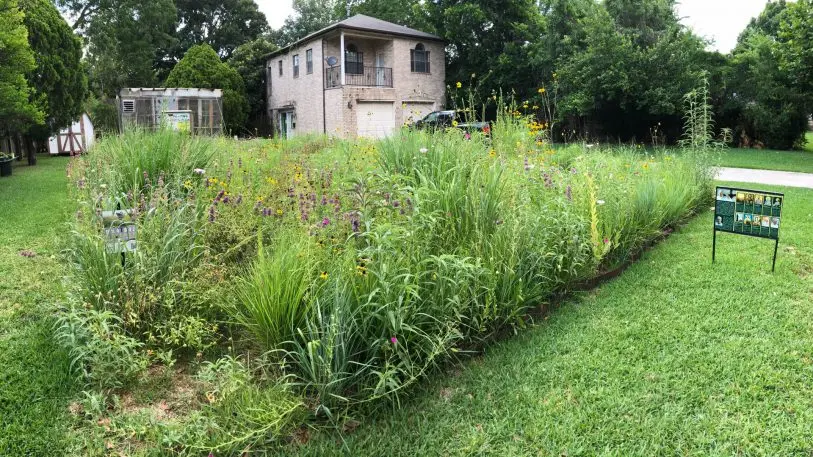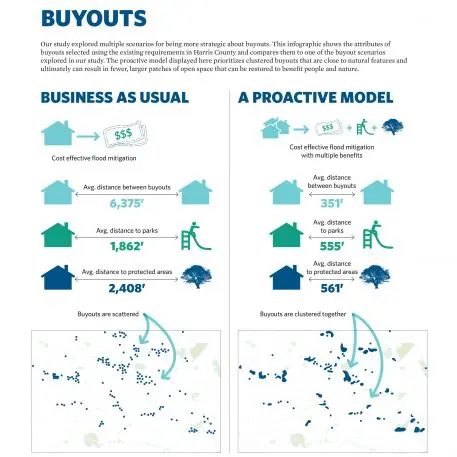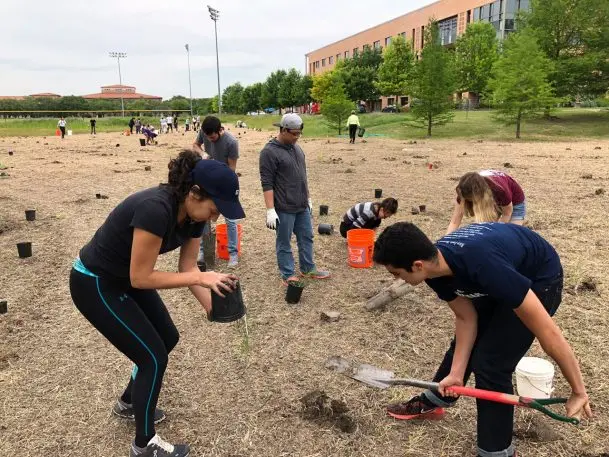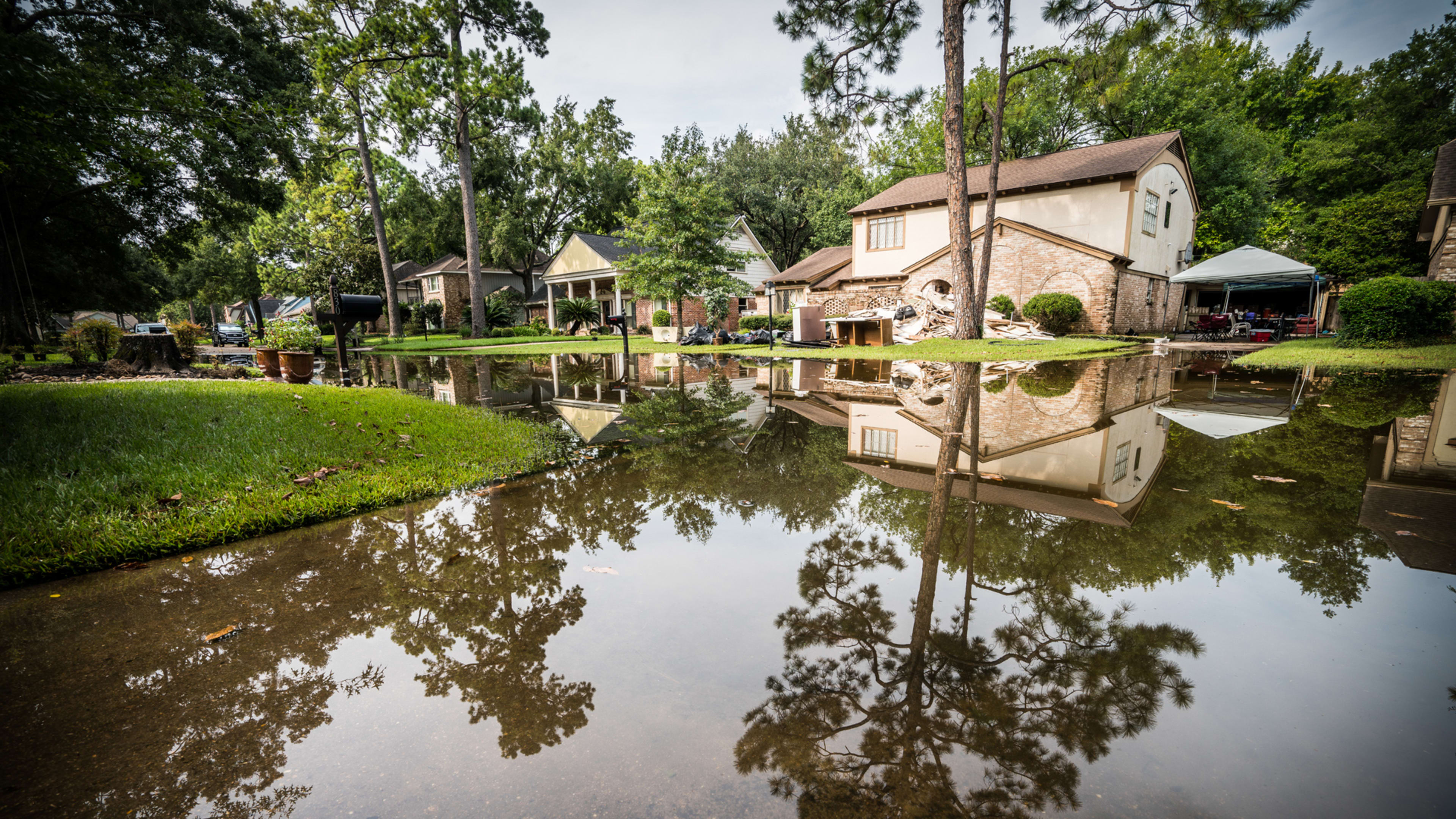A year and a half after Hurricane Harvey flooded hundreds of thousands of homes in Houston, the local county government is still buying out flooded properties from some residents. It’s a common process after floods: FEMA provides money to buy the houses at market rate, some homeowners volunteer to sell, and the homes are demolished because it’s very likely that they’ll flood again.
It often happens in a haphazard way because of limited funds and some people’s unwillingness to sell, leaving a checkerboard of vacant lots surrounded by houses that are still standing. A new study explains how it could happen more strategically, by demolishing homes in groups to leave larger open areas. In a city like Houston, that could begin to address a bigger design problem: As the city sprawls and buildings and pavement cover more of what was originally a wetland, there’s little green space left to absorb rain in a heavy storm.


The study looked at flood claims from nearly 75,000 properties and the history of flood damage at each home. Around 3,500 of the houses flooded in multiple storms, racking up more than $600 million in damages between 1978 and 2017. Climate change is making intense storms more likely–two separate studies found that climate change roughly tripled the chances of a storm like Harvey, which dumped around 33 trillion gallons of rain in the Gulf area. At the same time, open space in Houston has been quickly shrinking. Between 1992 and 2010, Houston lost an area of wetlands that could absorb 4 billion gallons of rainwater.

Communities typically don’t have enough funding to buy every property that could be eligible for a buyout program. But strategically buying properties in clusters, or next to existing green spaces, is no more expensive than buying scattered homes throughout a city. (The study doesn’t say how to address the fact that some people want to stay in their homes, despite the flood risk.) The strategy can create new park space, save the local government money on maintenance, and more effectively soak up rain.
Cities are beginning to think of green space as a tool–as much as hard infrastructure like pipes or reservoirs–for dealing with flooding. “It’s not just about places for people to go and play on the weekends, or the traditional view of a park,” says Huffman. “Cities are now understanding the functionality of these open spaces. I do think that that’s changing.” (Shanghai, for example, is using a “sponge city” approach to design green roofs, rain gardens, and other features to absorb stormwater; designers in Los Angeles and elsewhere have considered similar approaches.) Now, she says, they could also begin to take a similar approach in recovery after storms. “For cities to become resilient to storms, taking a good hard look at natural infrastructure would make a lot of sense,” she says.
Recognize your brand’s excellence by applying to this year’s Brands That Matter Awards before the early-rate deadline, May 3.
